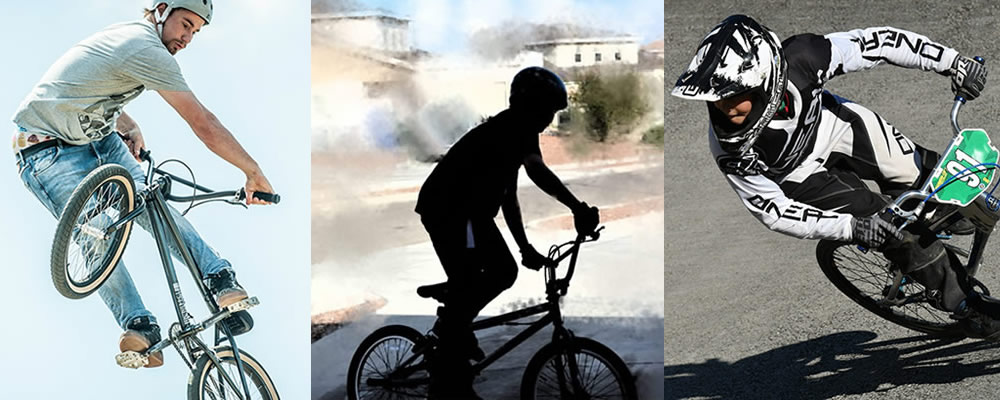Let’s explain the differences to you so it’s easier to make the decision on just the right type of bike to buy.
BMX means Bicycle Motocross and it became popular in the early ‘70’s in the USA, when kids would try and copy what the motocross racers of the time did. In that era, most kids had a Stingray bike which they used for racing each other on dirt tracks much like their motocross heroes did.
By the mid 70’s BMX racing had become so popular that bicycle manufacturers started making specially designed bikes for the sport. Within ten years, a BMX bike was a ‘must have’ for most young riders, and then there was a shift from just track racing to include freestyle riding.
BMX bicycle racing involves sprinting around a specially made, off-road BMX track. The dirt track is made up of various jumps and rollers and is large enough for up to 8 riders per race. It’s now such a popular sport that it became a medal event at the 2008 Beijing Olympics.
Of course, BMX racing bikes have undergone significant changes over time. Modern materials and engineering make today’s BMX racing bicycles fast, light, yet stable and agile.

Freestyle BMX is stunt riding on BMX bikes. There are 5 types of freestyle BMX riding: street, park, vert, trails, and flatland
Street: Street riders like to perform tricks, turns and stunts with their bikes using the things you’d normally find in the street – curbs, rails, ledges, stairs etc.
BMX Park: Park riders ride in skate parks along with skateboarders, skaters and scooter-riders. Indoor skate parks have ramps and made from wood whereas outdoor skate parks are usually made of concrete.
Vert: this is a freestyle BMX discipline performed in a half pipe. Riders go up each side of the jumps and perform air tricks at the top of the jump before turning and landing to ride to the other side.
Trails: this kind of BMX riding is performed on ‘trails’ that are paths and jumps made of dirt which is why it’s sometimes called dirt jumping. Trail riders like to link jumps, perform tricks and get ‘big air’.
Flatland: these BMX riders are different to the others in that they like to ride on a smooth, flat surface and perform spinning and balancing tricks. Because these riders often stand on their bikes to do their tricks, the bike frames for this discipline need to be shorter and much stronger.
In most of the freestyle riding disciplines, a ‘freestyle’ BMX bike will cover most of the rider’s needs. These bikes need to be able to withstand the rigors of stunt riding in skate parks, dirt jumps and on the streets.
The exception is flatland riding, where a different BMX bike is needed - one with a shorter wheelbase so the bike can spin more easily or the rider can balance the bike on one wheel. These bikes usually have four pegs – one on each wheel axle for the rider to stand on.
1/ A true BMX bike,
2/ A street/dirt-jump/park 20-inch bike,
3/ A flatland 20-inch bike.
Basically, there are three different types of BMX bikes, so before buying a new bike, it’s best to consider what style of riding you’d like to do. Do you want to race or would you rather ride park and ramps? How about riding around near home and trying stunts on street features?
Some people refer to BMX as ‘a 20-inch" because the wheels have a diameter of twenty inches.
BMX race bikes also come in different frame sizes to fit the rider based on their age.
If you’re looking to buy a new BMX, then give us a call and we can make sure that the bike you choose will suit your style of riding.
==========================
Leave a comment